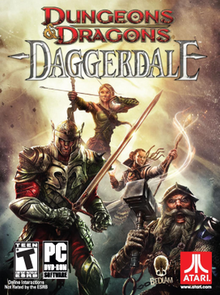
Ed Greenwood is a Canadian fantasy writer and the creator of the Forgotten Realms game world. He began writing articles about the Forgotten Realms for Dragon magazine beginning in 1979, and subsequently sold the rights to the setting to TSR, the creators of the Dungeons & Dragons roleplaying game, in 1986. He has written many Forgotten Realms novels, as well as numerous articles and D&D game supplement books.

Catti-brie is a fictional character in the Forgotten Realms setting, based on the Dungeons & Dragons role-playing game. The creation of American author R.A. Salvatore, she is primarily known as the love interest of the drow ranger Drizzt Do'Urden and has appeared in multiple media alongside Drizzt.
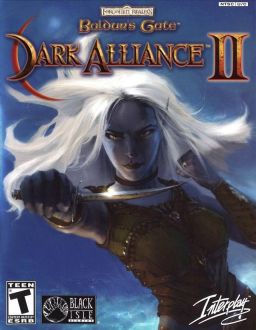
Baldur's Gate: Dark Alliance II is a 2004 hack and slash action role-playing game for PlayStation 2 and Xbox developed by Black Isle Studios and published by Interplay Entertainment, with distribution handled by Vivendi Universal Games in North America and Avalon Interactive/Acclaim Entertainment in Europe. It is the sequel to the 2001 game Baldur's Gate: Dark Alliance.

The Order of the Stick (OOTS) is a comedic webcomic that satirizes tabletop role-playing games and medieval fantasy. The comic is written and drawn by Rich Burlew, who illustrates the comic in a stick figure style.
Birthright is a Dungeons & Dragons campaign setting that was first released by TSR in 1995. It is based on the continent of Cerilia on the world of Aebrynis, in which the players take on the role of the divinely-empowered rulers, with emphasis on the political rulership level of gameplay. The setting revolves around the concept of bloodlines: divine power gained by heroes and passed on to their descendants. Characters with a bloodline create an aura of command known as Regency, which is measured in the game using regency points or RP. Using regency, characters acquire a domain composed of provinces and holdings. The development of these domains is as much a part of the game as development of the characters. The game uses three-month domain turns to model actions of rulers over nations in much the same way as Dungeons & Dragons uses combat rounds to simulate time to model the characters' actions in battle. In 1996, Birthright won the Origins Award for Best Roleplaying Supplement of 1995.
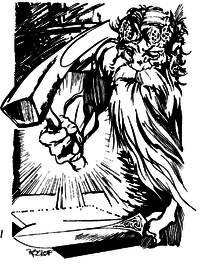
Moradin is the chief deity in the dwarven pantheon in the Dungeons & Dragons game and is a member of the default D&D pantheon. In 3rd edition, Moradin's domains are Creation, Earth, Good, Law, and Protection. The 5th Edition Players Handbook include Knowledge as a suggested domain. His titles include Soul Forger, Dwarffather, the All-Father, and the Creator. He created the first dwarves out of earthen materials and tutored them in dwarven ways.

The Lord of the Rings: The Battle for Middle-earth II is a 2006 real-time strategy video game developed and published by Electronic Arts. The second part of the Middle-earth strategy game series, it is based on the fantasy novels The Lord of the Rings and The Hobbit by J. R. R. Tolkien and its live-action film series adaptation. It is the sequel to Electronic Arts' 2004 title The Lord of the Rings: The Battle for Middle-earth. Along with the standard edition, a Collector's Edition of the game was released, containing bonus material and a documentary about the game's development.
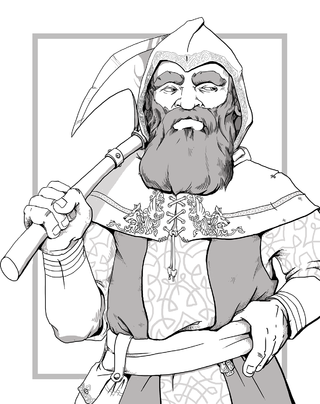
A dwarf, in the Dungeons & Dragons (D&D) fantasy roleplaying game, is a humanoid race, one of the primary races available for player characters. The idea for the D&D dwarf comes from the dwarves of European mythologies and J. R. R. Tolkien's novel The Lord of the Rings (1954–1955), and has been used in D&D and its predecessor Chainmail since the early 1970s. Variations from the standard dwarf archetype of a short and stout demihuman are commonly called subraces, of which there are more than a dozen across many different rule sets and campaign settings.
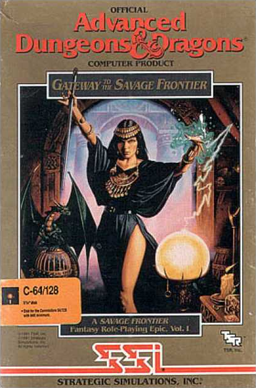
Gateway to the Savage Frontier (1991) is a Gold BoxDungeons & Dragons computer game developed by Beyond Software and published by SSI for the Commodore 64, PC and Amiga personal computers.
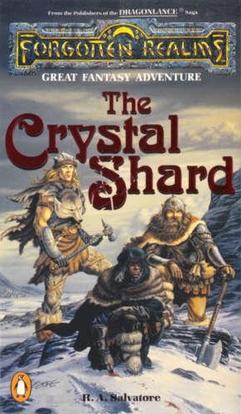
The Crystal Shard is a 1988 fantasy novel by American writer R. A. Salvatore. The first book in The Icewind Dale Trilogy, it was his first published novel.

Kobolds are a fictional race of humanoid creatures featured in the Dungeons & Dragons roleplaying game and other fantasy media. They are often depicted as small reptilian humanoids with long tails, distantly related to dragons.
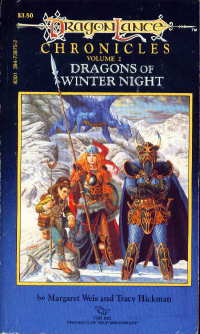
Dragons of Winter Night is a fantasy novel by Margaret Weis and Tracy Hickman. Based on the Dungeons & Dragons gaming modules, it is the second book in the Chronicles Trilogy, preceded by Dragons of Autumn Twilight and followed by Dragons of Spring Dawning. It was the second Dragonlance novel, being released in 1985. It is the second novel in the Dragonlance Chronicles trilogy, which along with the Legends Trilogy introduces the Dragonlance world. Specifically, it details the darker days of the War of the Lance.
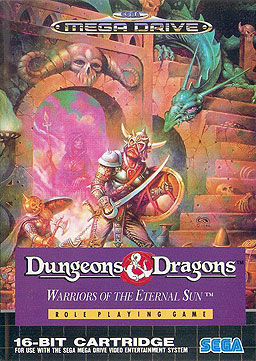
Dungeons & Dragons: Warriors of the Eternal Sun is a role-playing video game developed for the Sega Genesis in 1992 by Westwood Associates. The game tells the story of a party of adventurers who have been transported to an unknown world and must survive against its hostile inhabitants while learning about their new home and seeking allies. It is based on the Dungeons & Dragons (D&D) game rules, and uses creatures and themes from the D&D Hollow World campaign setting, such as Blacklore elves, the Azcans, beastmen, Malpheggi lizardmen, and dinosaurs.
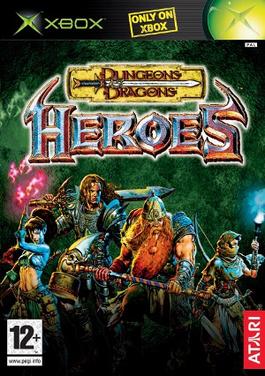
Dungeons & Dragons: Heroes is a hack and slash video game with RPG elements. It was published by Atari Interactive and developed by the subsidiary's Hunt Valley development studio, exclusively for Xbox in 2003. It is set in the Dungeons & Dragons universe and is playable solo or with up to four players. Players take on the role of four reincarnated heroes brought back to life to fight their former nemesis, a wizard named Kaedin.

L3 Deep Dwarven Delve is a fantasy adventure module or "module" for Advanced Dungeons & Dragons.

Dragons of Desolation is the fourth and final module in the first major story arc in the Dungeons & DragonsDragonlance series of game modules. It is one of the fourteen Dragonlance adventures published by TSR between 1984 and 1986. The module is intended for player characters of level 6–8.

Wulfgar, son of Beornegar, is the barbarian hero of Icewind Dale in the Forgotten Realms campaign setting, and one of the Companions of the Hall along with Drizzt Do'Urden, Catti-brie, Regis the halfling, and Bruenor Battlehammer. He is the creation of R.A. Salvatore.

The Complete Book of Dwarves is a supplemental rulebook for the 2nd edition of the Advanced Dungeons & Dragons fantasy role-playing game, published in 1991 by TSR, Inc. It contains a variety of information useful to playing dwarf characters in the game, including information on strongholds, dwarven subraces, character "kits", role-playing, mining, and more. The book was later reprinted in November 1993, with a slightly different cover.
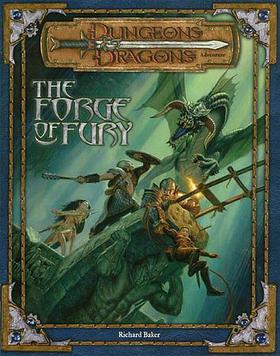
The Forge of Fury is an adventure module for the 3rd edition of the Dungeons & Dragons fantasy tabletop role-playing game.

The gargoyle is a fantasy and horror monster inspired by the appearance of bestial grotesque statues in architecture - particularly those sculpted to decorate the cathedral of Notre-Dame de Paris during its 19th-century reconstruction, rather than actual medieval statuary. Its name is based on the gargoyle architectural element, whose name is often incorrectly conflated with that of monstrous grotesques as a whole.
